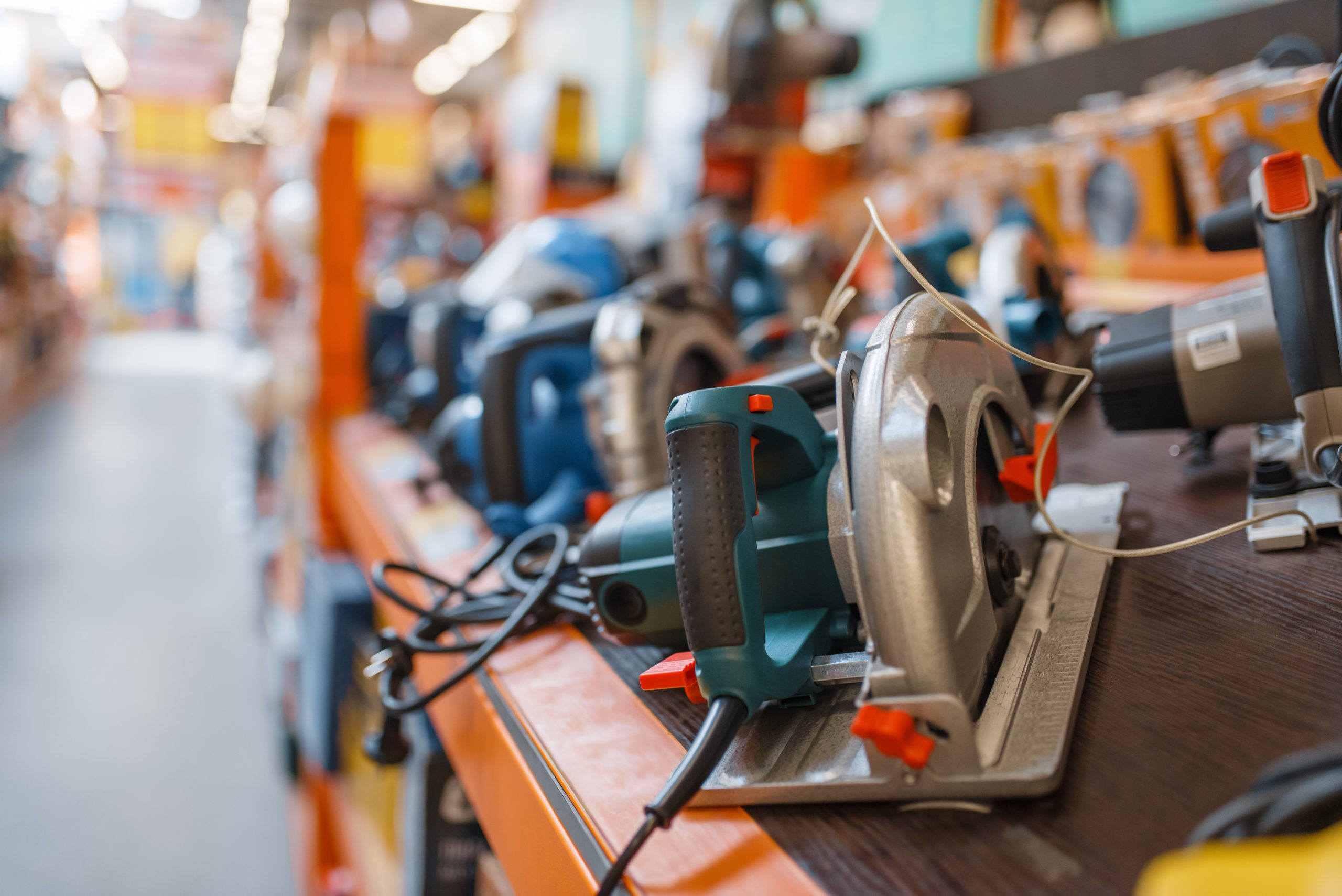The evolution of power tools is a narrative of relentless innovation, from manual tools to today’s smart tools. Grasping the history of power tools is crucial to appreciate the pivotal moments and advancements that have molded the industry. This history is a captivating journey that uncovers how DIY innovations have progressed over the years.
Exploring the history of power tools reveals the significant transformations that have reshaped the industry. This history showcases human ingenuity and the relentless pursuit of creating more efficient and effective tools. As we explore the realm of power tools, we uncover the pivotal events and innovations that have enabled us to enjoy the convenience and versatility of modern tools.
Key Takeaways
- The history of power tools is a story of continuous innovation and evolution.
- Understanding power tool history is essential to appreciate the significant milestones and advancements in the industry.
- The history of power tools explores how DIY innovations have evolved over time.
- Major developments in the history of power tools have transformed the industry.
- The power tool history is a testament to human ingenuity and the desire to create more efficient and effective tools.
- Modern power tools offer convenience and versatility.
- The history of power tools is a rich and fascinating topic that continues to shape the industry.
The Birth of Power Tools: From Manual to Mechanical
The transition from manual to mechanical tools was a pivotal moment in tool evolution. This change was driven by the need for more efficient and productive tools. It also fueled the growth of DIY innovations.
As the demand for mechanical tools grew, innovators and manufacturers started developing new technologies. They created machines that could perform tasks faster and with greater precision. This led to the creation of early mechanical innovations, such as the lathe and the drill press. These innovations paved the way for the development of modern power tools.
Early Mechanical Innovations
Some notable early mechanical innovations include:
- The introduction of the steam engine, which provided a new source of power for machines
- The development of the first mechanical drills, which enabled faster and more precise drilling
- The creation of the first lathes, which allowed for the production of symmetrical and balanced parts
The Industrial Revolution’s Impact
The Industrial Revolution significantly impacted the development of power tools. It brought about the mass production of machines and the standardization of parts. This led to the creation of the first commercial power tools. These tools were designed to meet the needs of industries such as manufacturing and construction.
| Tool Type | Year Introduced | Impact on Industry |
|---|---|---|
| Drill Press | 1800s | Enabled faster and more precise drilling |
| Lathe | 1800s | Allowed for the production of symmetrical and balanced parts |
Electric Revolution: The Dawn of Modern Power Tools
The electric revolution was a pivotal moment in power tool history. It brought about more efficient and powerful tools. Electric motors replaced manual and mechanical tools, leading to new tool designs for various industries.
Some key innovations of the electric revolution include:
- Introduction of electric drills and saws
- Development of portable and handheld power tools
- Improvements in motor design and efficiency
These advancements significantly impacted tool evolution. They paved the way for the modern power tools we rely on today.
As the electric revolution progressed, manufacturers aimed to create tools that were powerful, safe, and easy to use. This led to the introduction of new materials, designs, and features. These enhancements improved the overall user experience.
The electric revolution was a critical milestone in power tool history. Its influence is still evident in today’s power tools. Appreciating this period is crucial as we continue to innovate and advance technology. It shapes the tool evolution and the industry as a whole.
Pioneering Brands and Their Contributions
The power tool industry has been shaped by several pioneering brands. These brands have introduced innovative products and played a crucial role in shaping the industry’s landscape. The focus on DIY innovations has enabled individuals to take on various projects with ease.
Notable brands like Black & Decker, Milwaukee, and Makita have made a significant impact. They have introduced a range of products that have revolutionized the way people work on various projects. From cordless drills to impact drivers, these brands have consistently pushed the boundaries of innovation.
Black & Decker’s Game-Changing Innovations
Black & Decker is a well-known brand in the power tool industry. Its contributions to DIY innovations are unparalleled. The brand has introduced a range of products that have made it easier for individuals to undertake various projects, from drilling and driving to cutting and grinding.
Milwaukee’s Industrial Impact
Milwaukee is another brand that has made a significant impact on the power tool industry. The brand’s focus on industrial-grade products has enabled professionals to undertake complex projects with ease. This has driven the growth of the industry.
Makita’s Global Influence
Makita is a brand with a global reputation for high-quality power tools. Its products are used by professionals and DIY enthusiasts alike. The brand’s focus on innovation has driven the growth of the industry. By examining the contributions of these pioneering brands, we can gain a deeper understanding of the power tool history and the role of DIY innovations in shaping the industry.
A Complete History of Power Tools Through the Decades
The journey of power tools spans decades, filled with significant transformations. To grasp the tool evolution, we must explore the pivotal moments of each era. From the early 20th century to today, the power tool history showcases innovation, experimentation, and a dedication to enhancing work and creation.
Some key developments in power tool history include:
- The advent of electric power tools in the early 20th century, which transformed work and boosted productivity.
- The creation of portable power tools, like drills and saws, allowing for mobility in work.
- The introduction of cordless power tools, enhancing flexibility and convenience.
Looking ahead, the tool evolution will be influenced by technological advancements and evolving user needs. The power tool history reflects human ingenuity and the quest for better, more efficient tools. The advent of smart tools and digital integration promises an exciting future for power tools.
By delving into the history and development of power tools, we can appreciate the substantial progress made. This understanding prepares us for the innovations that will define the industry’s future. Whether you’re a professional contractor or a DIY enthusiast, the power tool history is crucial to the narrative of how we construct, create, and shape our environment.
Battery Technology: The Cordless Revolution
The evolution of battery technology has been pivotal in the cordless revolution of power tools. It has made tools more portable and convenient. This shift has greatly influenced DIY innovations, enabling individuals to complete projects more easily and flexibly.
In the realm of power tool history, battery advancements have been a key driver of innovation. As batteries have grown more efficient and powerful, manufacturers have expanded their range of cordless tools. This now includes everything from drills and saws to sanders and routers.
Cordless tools offer several advantages, such as increased portability, reduced weight, and enhanced safety. Yet, they also come with limitations, like reduced power and shorter runtime. Despite these drawbacks, their convenience and versatility have made them a favorite among DIY enthusiasts and professionals.
As battery technology advances further, we can anticipate even more advanced and powerful cordless tools. This development will likely redefine the power tool history, making cordless tools the standard rather than the exception. The future of power tools looks promising, with endless possibilities for DIY innovations.
Safety Innovations and Regulatory Impact
The power tool industry has seen major changes in safety and regulations. Looking into the tool evolution, it’s clear that safety has always been key in power tool history. Over time, makers have added many safety features to cut down on accidents and protect users.
Regulatory standards have been a big part of these changes. Bodies like the Occupational Safety and Health Administration (OSHA) and the International Electrotechnical Commission (IEC) have set important guidelines. The power tool history highlights key moments, like the start of safety certifications and rules.
Major Safety Milestones
- Introduction of safety certifications, such as UL (Underwriters Laboratories) and ETL (Intertek) listings
- Implementation of lockout/tagout procedures to prevent accidental start-ups
- Development of protective gear, such as gloves and safety glasses
As the industry grows, we’ll see more safety improvements and rules. The tool evolution will likely be influenced by new tech like AI and IoT. These will help make power tools smarter and safer. By knowing the importance of safety in power tool history, we can see the efforts to keep users safe and prevent accidents.
The DIY Movement’s Influence on Tool Development
The DIY movement has profoundly shaped the evolution of power tools, pushing for tools that are more accessible and user-friendly. This shift has led to the emergence of new tool designs. These designs empower individuals to tackle various projects independently, without needing professional help.
Notable DIY innovations include the advent of cordless power tools, enhancing convenience and portability. The power tool history is characterized by ongoing advancements. Manufacturers have been incorporating feedback from DIY enthusiasts to craft tools that cater to their unique requirements.
Several factors have fueled the DIY movement’s expansion:
- Increased availability of power tools and accessories
- Online tutorials and workshops offering guidance and inspiration
- Social media platforms showcasing DIY projects and sharing experiences
The DIY movement’s impact on power tool history is clear, with manufacturers catering to the demand for user-friendly and affordable tools. As the DIY movement continues to evolve, it will be fascinating to observe how DIY innovations influence the future of power tool development.
Digital Integration and Smart Tools
The power tool industry has seen major changes, with tool evolution at its core. The introduction of digital integration and smart tools is rewriting the power tool history. Internet of Things (IoT) technology has led to the development of modern power tools. These tools are not only efficient but also connected.
Some key features of these smart tools include:
- Remote monitoring and control
- Real-time data analysis
- Automated maintenance scheduling
These advancements have changed how we interact with power tools. They have become a key part of our digital world.
Looking ahead, the tool evolution will keep advancing with digital technology. Innovations like artificial intelligence and machine learning will boost power tool capabilities. They will make tools more efficient, safe, and easy to use. Understanding the power tool history helps us see the importance of these advancements and their impact on the industry.
Conclusion: The Future of Power Tool Innovation
The history of power tools is a story of continuous evolution, driven by the needs of DIY enthusiasts and professionals. From mechanical innovations to today’s smart tools, the industry has seen a remarkable transformation. This journey has been fueled by a relentless pursuit of efficiency, versatility, and safety.
The future of power tool innovation is set to bring even more exciting advancements. Expect breakthroughs in battery technology, IoT integration, and artificial intelligence. These will make power tools smarter, more connected, and intuitive. The power tool history has set the stage for a future where tools seamlessly integrate into our lives. This will empower us to complete projects with greater ease and precision.
As DIY innovations continue to shape the industry, we’ll see a focus on user-centric features. Tools will offer personalized management and predictive maintenance. The power tool of tomorrow will be a powerful instrument and a reliable partner in our creative and practical endeavors.
The power tool industry is ready to lead in innovation, continually pushing boundaries and enhancing our daily tasks and projects. The evolution of power tools is far from over, and the anticipation for what’s next is high.


